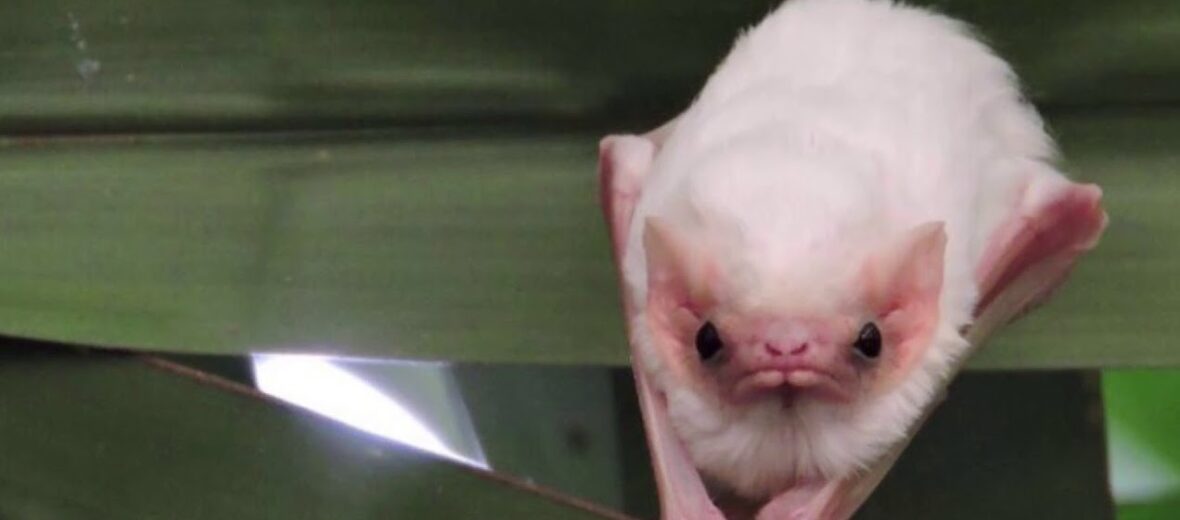
The northern ghost bat, aka jumby bat or jumbie, is a white or light grey bat species that hails from Mexico, to Central America, down to South America. They prefer tropical and coastal rainforest habitats. These little bats can be seen from sea level up to 5,000 foot elevations. Due to their numbers and distribution, these bats are listed as Least Concern by the IUCN.
First the Stats…
Scientific name: Diclidurus albus
Weight: Up to .70 ounce
Length: Up to 2.8 inches
Wingspan: Up to 15 inches
Lifespan: Up to 20 years
Now on to the Facts!
1.) Like most other bats, they are nocturnal (active at night).
2.) They roost, during the day, in old mines, rock crevices, and caves while in colonies. These cute bats typically roost alone, but have been seen in small colonies of up to 100 bats.
3.) When roosting alone, they will rest on the undersides of palm trees or under the protection of patio overhangs.
4.) Northern ghost bats prey on flying insects, mostly moths.
5.) The northern ghost bat has vestigial (non-functioning) thumbs.
But wait, there’s more on the northern ghost bat!
6.) Unlike the other members of the Emballonuridae family, they don’t possess wing sacs.
7.) Their uropatagium (the membrane that extends between the thighs of a bat and typically includes the tail) has a triangular gland with 2 valves. The purpose of these valves is not known.
Did you know…?
These bats have been known to sing, while flying.
8.) They migrate, but only within the tropical regions.
9.) Owls and snakes prey on these bats.
10.) Females give birth to a single pup, each breeding season.
Now a Short Northern Ghost Bat Video!
Be sure to share & comment below! Also, check out the Critter Science YouTube channel. Videos added frequently!
Want to suggest a critter for me to write about? Let me know here.



